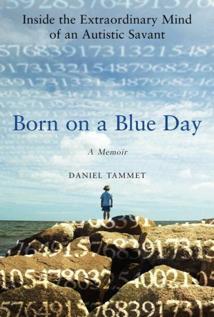
You don’t have to be disabled to be different, because everybody’s different.
At the end of Look Me in the Eye, Born on a Blue Day is mentioned as another similarish memoir of growing up with Autism. I saw it was available as an Audiobook on Libby, so I figured I’d give it a try.
In a lot of ways, it’s a similar book–they’re both memoirs after all and both of autistic individuals no less.
But then things start to diverge. For one, Tammet is also what’s called an ‘autistic savant’. He has an amazing memory, especially with numbers and is capable of mental arithmetic well beyond the average.
Why learn a number like pi to so many decimal places? The answer I gave then as I do now is that pi is for me an extremely beautiful and utterly unique thing. Like the Mona Lisa or a Mozart symphony, pi is its own reason for loving it.
In addition, he’s synesthesic as well, associating sizes/colors/textures with numbers. It’s all tied up with his mathematical abilities and also quite the interesting way to see the world–but not one that I have any experience with.
Professor Ramachandran believes this synesthetic connection between our hearing and seeing senses was an important first step towards the creation of words in early humans. According to this theory, our ancestors would have begun to talk by using sounds that evoked the object they wanted to describe. For example, words referring to something small often involve making a synesthetic small i sound with the lips and a narrowing of the vocal tracts: Little, teeny, petite, whereas the opposite is true of words denoting something large or enormous. If the theory is right, then language emerged from the vast array of synesthetic connections in the human brain.
So while it’s certainly an interesting read, I didn’t resonate quite so strongly with this one. Such is life.
Reading two non-fiction books in three days (and memoirs no less) is a bit of an odd one for me. Onwards and back to our regularly scheduled Animorphs 😄!